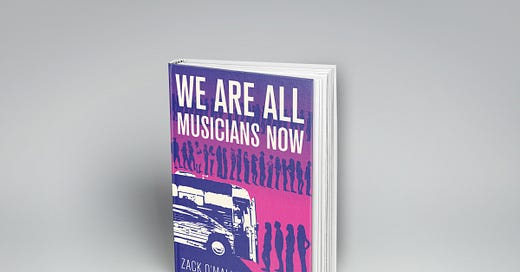Why Amanda Palmer Hates The Word 'Superfan' [WAAMN Chapter 3.3]
... even though the phenomenon itself is of existential importance to her business—and yours.
This is the weekly installment of my new book, We Are All Musicians Now. To make sure you don’t miss future serializations, subscribe here. Below you’ll find Chapter 3: Rise of the Superfan (Part 3). Enjoy!
<< PREVIOUS CHAPTER << || TABLE OF CONTENTS || >> NEXT CHAPTER >>
Amanda Palmer didn’t invent the word “superfan”, but she might as well have: after g…
Keep reading with a 7-day free trial
Subscribe to ZOGBLOG by Zack O'Malley Greenburg to keep reading this post and get 7 days of free access to the full post archives.





